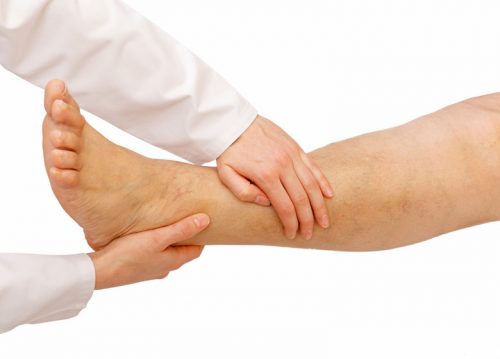Swollen Legs Treatment

As a lymphatic therapist, I often get asked,
“How do you get rid of swelling in your ankles?”
To that end, I’ve writen the following article to explain why swelling happens and how to get rid of it.
WHY DO I HAVE SWOLLEN LEGS?
Swollen legs, medically referred to as edema, can be a troublesome and uncomfortable condition affecting millions of people worldwide. Swelling occurs when excess fluid builds up in the body’s tissues, very commonly in the legs and feet.
This swelling can come from various causes, including underlying health conditions, lifestyle factors, or injury. This article aims to explore the causes of swollen legs and the treatment options available, with a particular focus on lymphatic massage properly called “Manual Lymphatic Drainage” (MLD), a therapeutic technique known for its effectiveness in reducing swelling. (This is what I do as a therapist!)
Causes of Swollen Legs (Edema)
-
Fluid Retention: One of the most common causes of swelling is fluid retention. This can be the result of excessive salt intake, hormonal changes, and certain medications. When the body retains more fluid than it can efficiently eliminate, it leads to swelling in the legs.
-
Vein Problems: Vein problems, often seen in conditions like chronic venous insufficiency (CVI) or varicose veins, can weaken the leg veins’ ability to return blood to the heart, leading to fluid buildup in the lower limbs.
-
Heart Issues: Congestive heart failure and other heart conditions can cause the heart to pump blood less effectively, leading to fluid buildup in the legs.
-
Kidney Problems: Kidney diseases can result in decreased filtration of waste and excess fluids, leading to swelling in various parts of the body, including the legs.
-
Infections: Infections like cellulitis can cause inflammation and fluid retention in the affected areas, often the legs. (IMPORTANT!! If you have an active infection, you need to put off lymphatic massage until the infection is gone.)
-
Lymphedema: Lymphedema is a condition characterized by the accumulation of lymphatic fluid in the tissues. It can be primary (genetic) or secondary (caused by injury, surgery, or radiation therapy). The most common cause of lymphedema in the United States is cancer treatment.
-
Medications: Some medications, including steroids, calcium channel blockers, and nonsteroidal anti-inflammatory drugs (NSAIDs), may lead to leg swelling as a side effect.
-
Pregnancy: During pregnancy, the body experiences hormonal changes and increased blood volume, which can result in swelling in the legs and feet. Additionally, the pressure the baby puts on the veins that return the blood to the heart causes back pressure in the legs. After pregnancy swelling may persist due to damage to valves in the veins as a result of this back pressure.
How to Get Rid of Swelling in Your Ankles
Treatment Options for Swollen Legs
-
Lymphatic Massage (Manual Lymphatic Drainage)
Lymphatic Massage, formally called “Manual Lymphatic Drainage” (MLD) is a specialized skin stretching technique designed to stimulate the lymphatic system, promoting the removal of excess fluid and waste products from the body. Lymphatic massage is particularly effective in managing lymphedema and swelling associated with various medical conditions. In lymphatic massage the therapist uses gentle, rhythmic hand movements to encourage lymphatic flow to return the fluid to the bloodstream where it is peed out.
-
- How Lymphatic Massage Helps with Treating Swollen Legs:
- Reduces swelling: MLD is highly effective in reducing swelling by increasing the efficiency of the lymphatic system, promoting fluid drainage.
- Pain relief: MLD can alleviate discomfort associated with swollen legs, enhancing overall quality of life.
- Improved circulation: By enhancing lymphatic flow, MLD also boosts blood circulation.
- Supports healing: MLD can help with the healing process after surgery or injury.
- How Lymphatic Massage Helps with Treating Swollen Legs:
-
Lifestyle Modifications:
- Reducing salt intake: A low-sodium diet can help decrease fluid retention.
- Elevation: Elevating the legs above the level of the heart can assist in draining excess fluid.
- Compression stockings: Wearing compression stockings can improve blood circulation and reduce swelling. These are especially helpful to help maintain gains from lymphatic massage between appointments.
-
Medications that Cause Leg Swelling:
- Diuretics: In cases of severe swelling, diuretics may be prescribed to promote fluid excretion. Be aware, however, that in the case of lymphedema caused by lymphatic impairment (for example after surgery, radiation, or chemo) as opposed to a heart condition, diuretics can have the opposite effect. If you have lymphedema caused by damage to your lymphatic system and are on a diuretic, speak to your doctor to determine if you are being prescribed diuretics for the lymphedema or another condition. Stopping diuretics when they are actually helping for other conditions can be harmful.
-
Underlying Health Conditions:
- Causes such as heart or kidney issues can also lead to swelling in the legs. If you have either of these conditions, please consult with your physician before getting lymphatic massage as moving the fluid back into your bloodstream (which is exactly what we do in lymphatic massage) causes some temporary additional load on both of these organs.
- A couple of rough guidelines for when it isn’t safe for me to work on someone:
- Advanced Congestive Heart Failure – this is usually evident when someone is unable to lie on his or her back without coughing due to buildup of fluid around the heart. It is not safe to receive lymphatic massage in this case as it can negatively affect your breathing.
- Advanced Kidney disease – less than 50% function of the kidneys makes lymphatic massage a bit more challenging. A doctor’s note is required between 30-50% function.
- A couple of rough guidelines for when it isn’t safe for me to work on someone:
- Causes such as heart or kidney issues can also lead to swelling in the legs. If you have either of these conditions, please consult with your physician before getting lymphatic massage as moving the fluid back into your bloodstream (which is exactly what we do in lymphatic massage) causes some temporary additional load on both of these organs.



